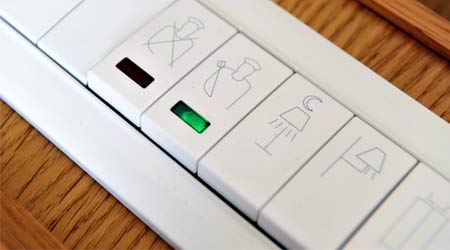SIDEBAR: Lighting Control Specification Enables Utility Incentives
Part 4 of a five-part article on lighting controls
To drive demand for networked lighting control systems, the DesignLights Consortium (DLC) recently developed a networked lighting controls performance specification that will allow utilities to qualify products and incorporate them into their rebate programs. The process began in 2014 and included energy-efficiency programs and manufacturers. The resulting specification is flexible so as to include the many types of systems and approaches on the market.
Networked Lighting Control Systems Specification v1.01 covers control systems defined as such. It does not cover connected luminaires. The specification is based on required and reported system capabilities. Required capabilities must be verified for listing, while reported capabilities are not required but will be identified by the DLC in the listing to help specifiers select appropriate solutions.
Required system capabilities include:
• �networking of luminaires and devices
• �luminaire and device addressability
• continuous dimming
• �occupancy sensing, daylight harvesting and high-end trim
• zoning.
A minimum five-year warranty covering all components addressed in the specification also must protect the system, which must be commercially available. Reported system capabilities include:
• �luminaire-level control, either integrated or non-integrated
• �time-scheduling, load shedding — demand response — personal control, and plug-load control
• �localized processing, or distributed intelligence
• �integration of BMS, EMS and HVAC systems
• energy monitoring
• �device monitoring, or remote diagnostics
• type of user interface
• operational and standby power.
About 40 systems on the market might be eligible to satisfy the specification, according to the DLC.
DLC members and other energy efficiency programs are expected to develop new programs around the networked lighting control specification, though individual programs and timelines are likely to vary among utilities. Some already have developed programs and will launch them in the second half of 2016, while others will launch programs in 2017.
The networked lighting controls specification is part of a larger market transformation effort by the DLC. Additional program elements expected in the latter half of 2016 include an energy savings estimating tool for layered lighting controls, training programs and demonstration projects. The DLC also is working on a unified, market-friendly incentive strategy that would simplify the rebate process and streamline it across multiple program territories.
The DLC also has released a Networked Lighting Controls category in its Qualified Products List (QPL). The first qualifying products will be published in summer 2016. The likely result is inclusion of networked lighting controls in rebate programs that annually allocate billions of dollars in funding to promote energy.
Comprised of 83 members representing some 100 utilities and energy efficiency programs, the DLC is a non-profit dedicated to promoting energy-efficient lighting. Its mainstay is the Solid-State Lighting QPL, a list of about 175,000 LED products tested and verified as satisfying stringent performance and efficiency criteria. Utilities and energy-efficiency programs across the United States and Canada use the QPL to qualify LED products as being eligible for commercial sector lighting rebates.For more information on these resources and activities, managers can visit www.designlights.org.
Related Topics:
















